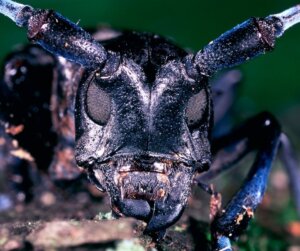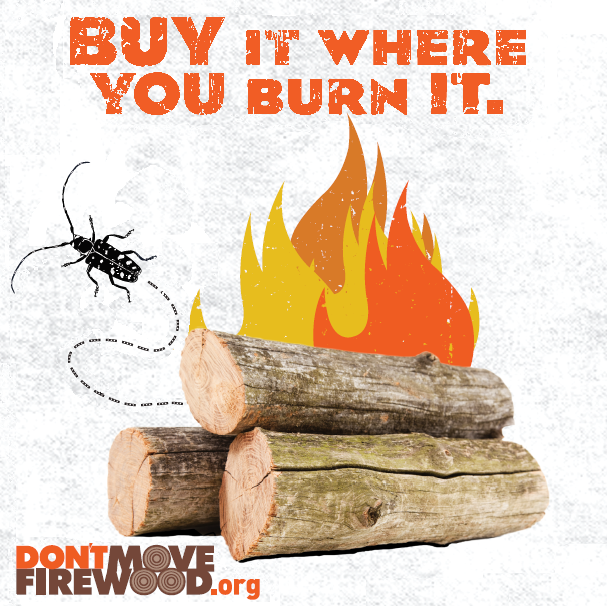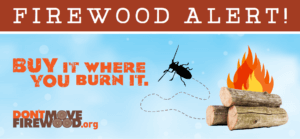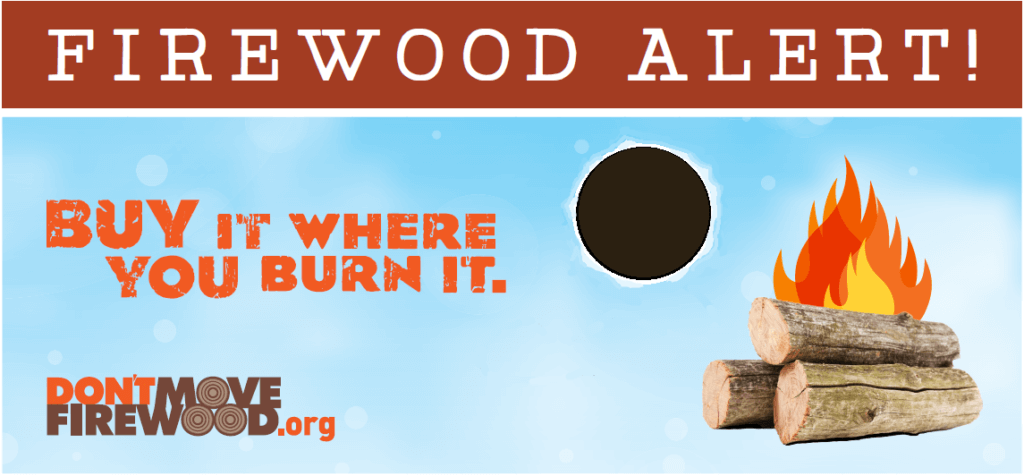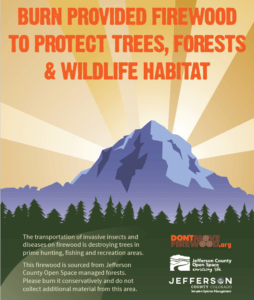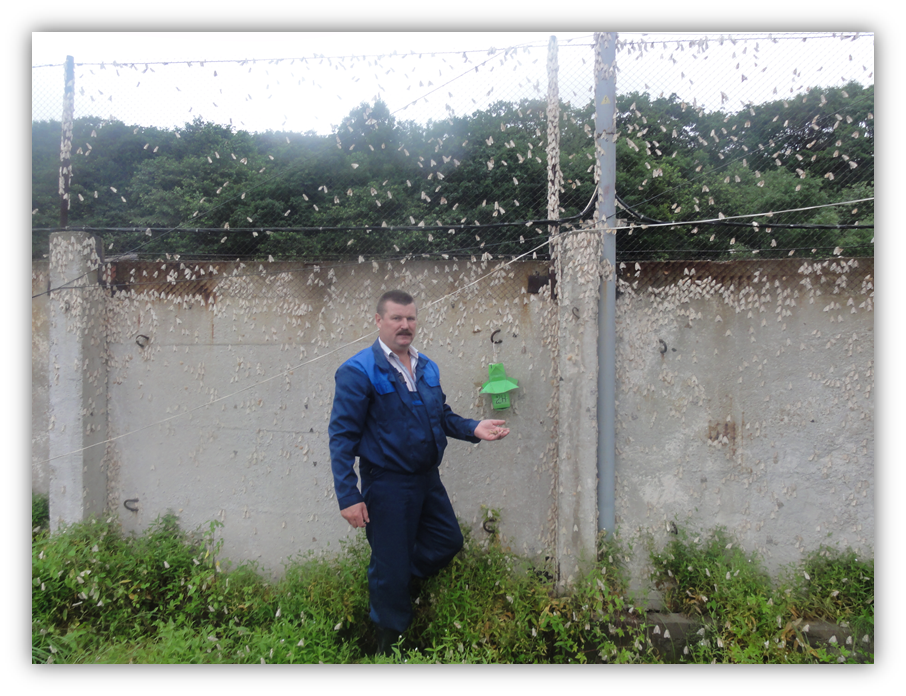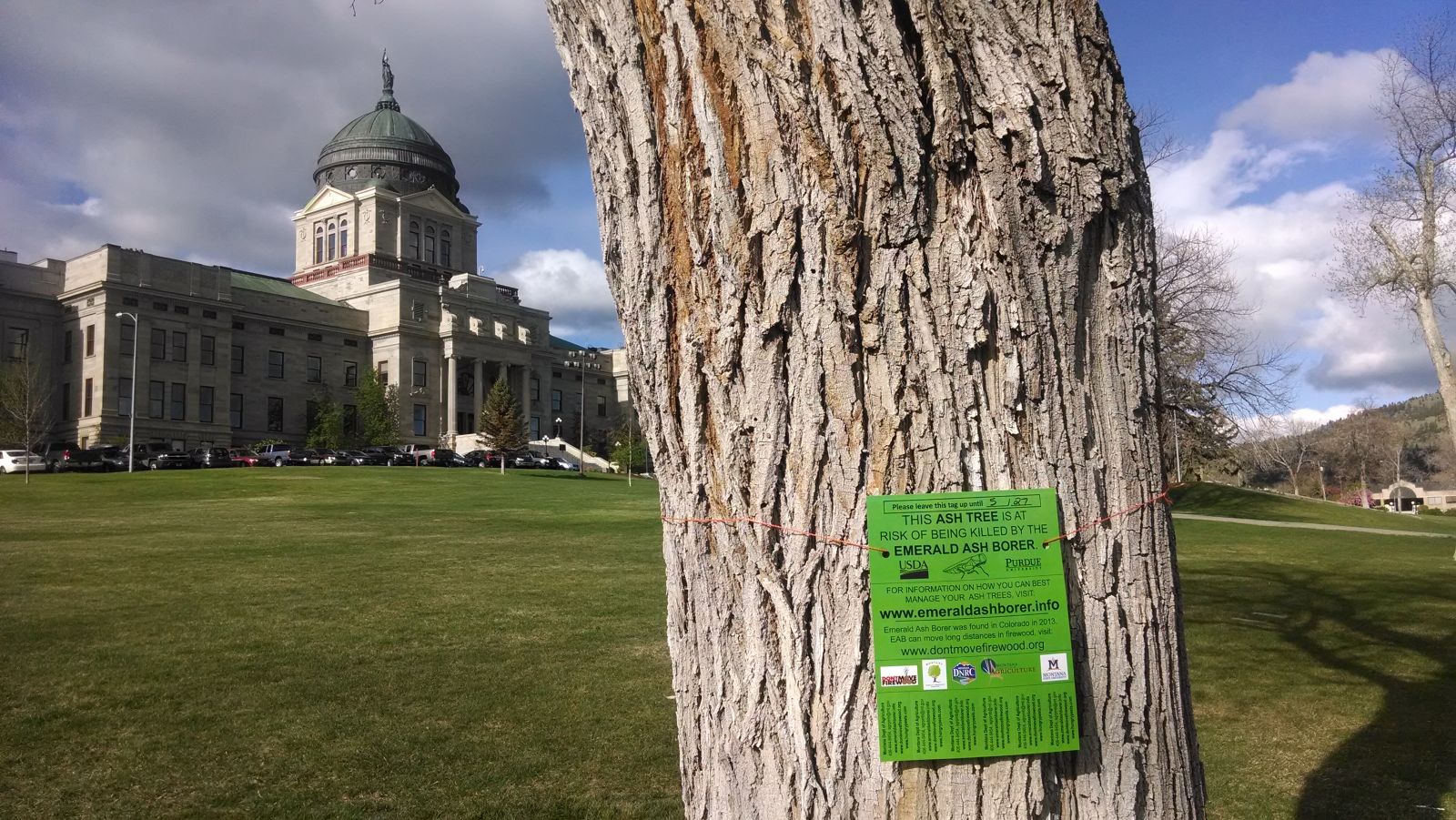Guest blog by Ryan DeSantis, Forest Health Program Manager with the Wyoming State Forestry Division
Every year, millions of people travel to Wyoming to experience its outdoor recreation opportunities. This August, an estimated 500,000 additional visitors from out of state will come to Wyoming to view a rare total eclipse of the sun. On August 21, 2017, from approximately 10 AM to 1:30 PM, the eclipse’s 70-mile wide path of totality (the area where the moon will completely cover the sun) will span more than 365 miles across the length of Wyoming: from Jackson at the western edge of the state to Torrington on the eastern border. Wyoming is an ideal place to watch this eclipse due to its wide-open spaces, low light pollution, abundant public lands, and high probability of clear skies.
The Wyoming State Forestry Division has embarked on a partnership with the national Don’t Move Firewood campaign in anticipation that out of state campers might intend to bring their own firewood- not realizing that this has the potential to transport tree-killing insects and diseases into Wyoming forests. This educational campaign consists of billboards and public outreach materials to raise awareness of the need to buy or gather local firewood. Billboards will be located along interstate highways in Montana, Wyoming, South Dakota, Nebraska, and Colorado, targeting traffic traveling toward Wyoming. The goal is to alert people prior to entering Wyoming. Additionally, the Wyoming State Forestry Division issued a press release to notify in-state, adjacent out-of-state, and national media outlets about the billboard advertising campaign.

Campers coming to Wyoming to view the eclipse are encouraged to buy firewood near their destination, or plan to collect firewood if that is allowed at their campsite. Every visitor to Wyoming has a role to play in keeping our forests free of invasive forest insects and diseases.
The USDA Forest Service State and Private Forestry Program helps support Wyoming’s State Cooperative Forestry Programs. Wyoming State Forestry Division is grateful for the funding provided by the USDA Forest Service State and Private Forestry Program that enabled this Don’t Move Firewood advertising campaign. The partnerships between organizations such as the USDA Forest Service and state forestry organizations create such outreach possibilities.
Wyoming’s billboard campaign is slated to run from August 14 to September 11, 2017. Wyoming State Forestry Division has also set up a website to support this effort- for more information, please visit the site: https://sites.google.com/wyo.gov/firewood/home
You may also be interested in:




